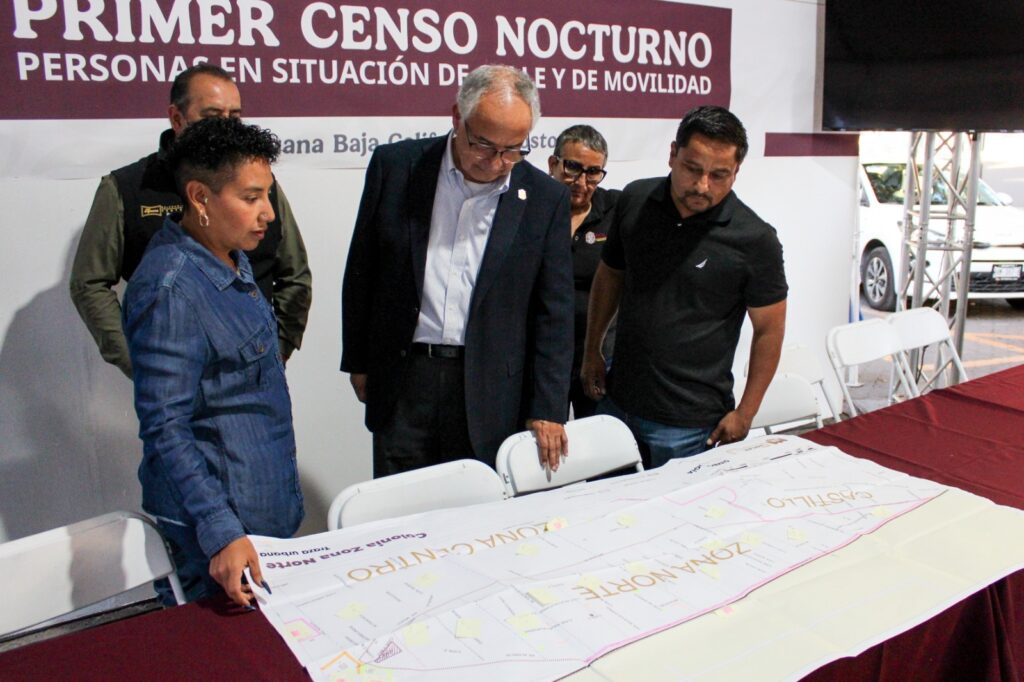Counting People, Not Problems
While most of us slept, more than 300 workers hit Tijuana’s streets. Their mission: the city’s first-ever night census of people living on the streets. The goal is simple. Who are they, where are they, and how many are there? If you want to plan the future, you better know the present.
How They Did It
The effort came under Governor Marina del Pilar’s orders and tied into the national program led by President Claudia Sheinbaum. A command center buzzed at Delegación Centro, hosting federal, state, and city officials. On the ground, teams spread across the Zona Norte, Zona Centro, La Mesa, Playas de Tijuana, and San Antonio de los Buenos.
Each group had staff from health, social welfare, and public safety. They carried supplies, clipboards, and enough coffee to fuel an army. Their task: record everyone they could find, all night long.
Words from the Top
Beatriz Olivares from the National Center for Crime Prevention put it this way:
“We worked together to close the gap of inequality.”
State Secretary Alfredo Álvarez Cárdenas said the census created a reliable database to connect people with health, shelter, ID, and jobs. Mayor Ismael Burgueño went a step further, calling it “an act of empathy” and a way to humanize those often ignored.

What Comes Next?
That’s the big question. The census gives Tijuana a snapshot. Now comes the real challenge—turning numbers into action. That means opening shelters, boosting mental health care, and linking people to jobs. The hard part isn’t counting. The hard part is following through.
Learning from Los Angeles
Other cities already do this. In Los Angeles, volunteers conduct the “Homeless Count” every January. Thousands walk neighborhoods for three nights, logging who sleeps on sidewalks, in tents, or in cars. They repeat it yearly, because the situation changes fast. Housing costs, migration, and addiction all reshape the crisis.
The lesson for Tijuana? One night isn’t enough. A census is useful only if it becomes routine, transparent, and followed by action.
We’ll Be Watching
This first night census is a start, not a finish line. The next step is clear: show the results and act on them. GGNorth will keep an eye on whether this late-night headcount sparks real change or ends up filed under “good intentions.”
Because yes, the city finally counted its invisibles. Now we’ll see if it can give them more than a number.



1 Comment